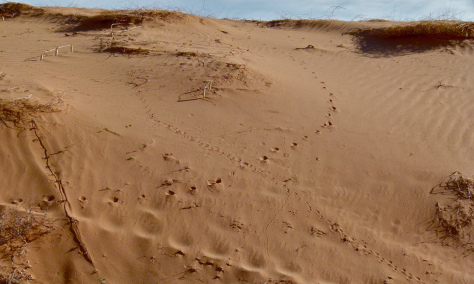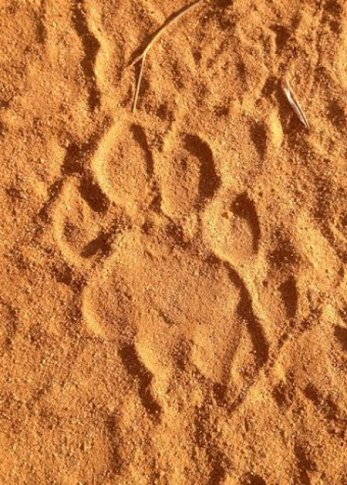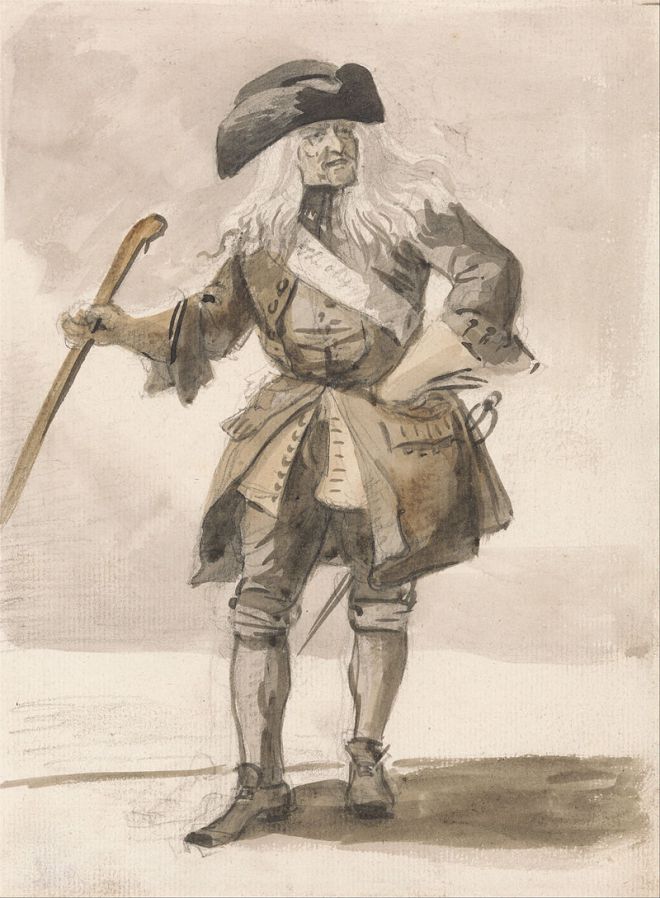Each morning brings a new episode in the ongoing series “Stories in the sand” – to the trained eye a whole new world of intriguing interactions and dramas from the previous night unfolds each morning. Battles big and small, visits from the biggest, baddest and meanest to those who crawl.

Its like an open book – one that could be read as well as contributed to. Maybe you could call it “Wiki-Landscape”. Though I’d prefer to think of it as the encyclopedia of who did what last night: a book that absorbs you such that you are suddenly one of the characters of the very story you are reading in the sand. What we often underestimate is exactly how much information we can gather from the signs left behind by animals and it is once we start following and identifying the spoor, that we start building a “bigger picture†of exactly what the animal/s are doing. A jackal scratching fleas, a Toktokkie looking for a mate, to the king of beasts leisurely strolling through camp to all sorts of critters running to and fro, there are much to read and learn.

The stories in the red sand carried so many characters, events and action which we would have otherwise never seen, if we had not looked. The San (Bushman) are the oldest inhabitants of Southern Africa, Â they have lived here for at least 20 000 years. They are the master readers when it comes to stories in the sand. They know each and every character by hart and they know exactly how to interpret what might look to us like ordinary marks in the sand.
Stories in the sand is any sign of a creature or trace by which the progress of something may be followed. A spoor may include tracks, scents, scat or broken foliage.
To read these stories in the sand you need to understand the basics. Â1. Who Made The Tracks?
What type of animal made these tracks? There are numerous pocket guides available for resources in identifying tracks. Signs of the Wild by Clive Barker is one of the most complete guides available.
2. What Was The Animal Doing When The Tracks Were Made?
Was the animal chasing another animal or hunting another animal? Was the animal walking or just grazing? Was the creature alone and if not – what was the interaction with the others?
3. When Were The Tracks Made?
By identifying when the tracks were made, you can get a better picture of the animals habits and or if its nocturnal or day living. How long ago did the animal past.
4. Where Did The Animal Go From Here?
Is it just passing through? Did it go to sleep near by? Sometimes, by following fresh tracks for a short distance, you will find the animal.
5. Why Did The Animal Go Though Here?
Why does the animal move at a specific time of day? Is this a pattern for this animal? Will it come by tomorrow and use this same path? Many animals have “roads” and “highways” that they constantly use.

- More





